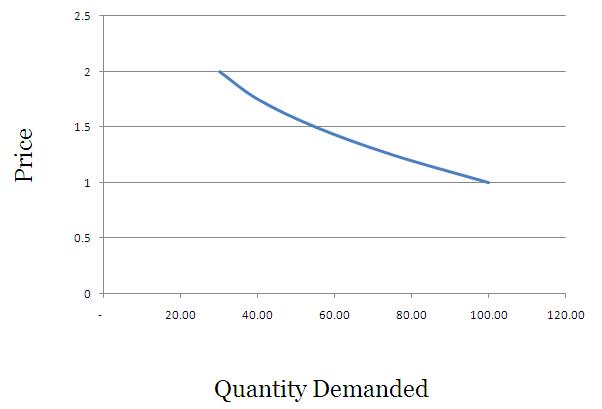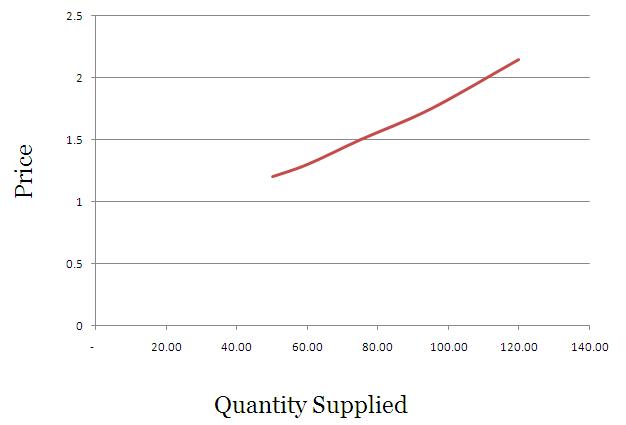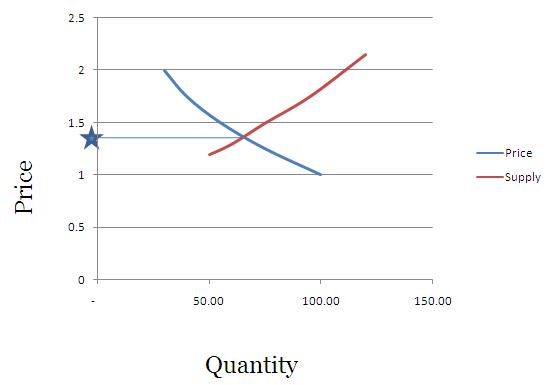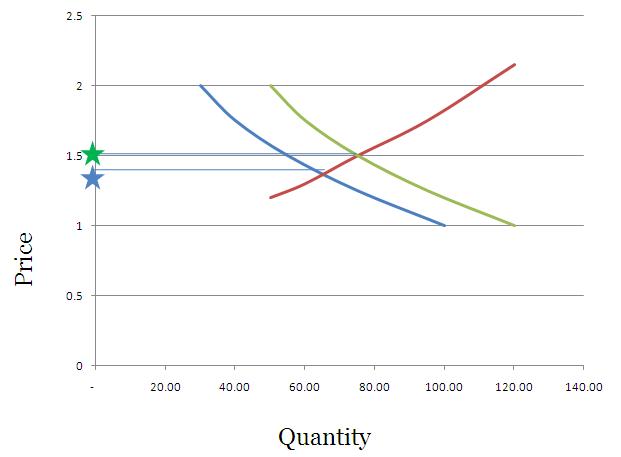This is another post from the Suggest a Topic page, and while the original comment had a lot of questions about the overall functioning of an economy, I thought I’d take one question from it, and try and answer that in a post.
Why can’t a country print money and become rich?
A lot of people have this misconception that a country’s currency is backed by the gold it holds. But, this is simply not true – any country can print as much money as they want, and they don’t need to have any gold to back their currency.
In fact, in recessionary times – countries do resort to printing money, or what is known as Quantitative Easing, – a term that became popular just after the recession.
But, that measure is only for extreme situations, and is also considered dangerous because printing money causes inflation in an economy, and if you print too much money you can get hyper – inflation also.
So, how does printing money cause inflation?
Demand and Price
Let’s take a simplified example to understand this. First, think of how demand of a product is related to its price.
That’s fairly easy to do right? A lot more iPads will sell at Rs. 5,000 than they will at 25,000.
If you were to draw a graph that shows the relationship between demand and price of a product it would generally look like this.
 In this example – at 1 rupee you demand 100 units of a commodity, but at Rs. 2 you demand just 30.
In this example – at 1 rupee you demand 100 units of a commodity, but at Rs. 2 you demand just 30.
You can get fancy and call this a downward sloping demand curve.
Supply and Price
On the other hand a lot more suppliers will be willing to get into a business if the end product sells at a higher rate. I remember quite a few years ago, a lot of households started planting vanilla in Kerala because vanilla rates had shot up.
So, supply will be high at higher prices, and that curve would look something like this.
In this example – you want to supply just 50 units at Rs. 1.20, but when the price shoots up to Rs. 2.15 – you are willing to supply as much as 120 units.
Feel free to tell your friends that supply curves are upwards sloping.
How is the price finally fixed?
The price of any product is largely determined by its demand and supply, and when you super impose the price curve and demand curve – the intersection is called the equilibrium price, and it is generally believed that prices will move towards this point and stabilize here.
In our example this will look something like this.
What will happen if the government prints money and hands it out to its citizens?
What happens when your income rises? – Your consumption or demand of certain things also rises with your income.
I see a great example of this with cell phone usage, as I have cousins of varying ages. The one who goes to school just uses SMS and gives missed calls, the one in college doesn’t mind calling you, but you have to call her back if you want to have a long conversation, and Mr. Mittal can dedicate at least one cell phone tower to the one who has started earning.
The eldest one has gone through the stage of SMS and short calls, and as her income rose, so did her consumption. Your consumption / demand will generally increase with your income levels.
Now think of a situation where you open up OneMint and read that the government is sorry for all its misdeeds, corruption, and general incompetence, and has decided to credit everyone’s savings account with Rs. 1 crores, and if you don’t have a savings account then a minister will come to your house and give you the cash personally.
After you recover from the mild heart attack this news causes you – you will think that you have become rich, and will start spending like crazy. If you used an air conditioner for just the night – you will now want to use it all the time.
Your demand for a lot of things will increase since you have this extra money now, and you are rich.
So, let’s get back to our earlier example, and say that instead of demanding 30 units at Re. 1 – you will now demand 50 units at Re. 1 and instead of demanding only 1oo unit at Rs. 2 – you will now demand 120 units at Rs. 2.
This will have the impact of shifting the demand curve to the right, and pushing the price of the commodity upwards.
If you were to graph this – it would look something like this.
The green star indicates the price which will be fixed due to the new realities of increased notional wealth, and people demanding more because their wealth has been increased.
Think of times when the stock market is booming – people have this “wealth effect†where they feel that they are richer and start spending more, and as a result prices rise as well. Just printing money will also do the same thing.
What I have done here is take an example that’s used with respect to increased incomes, but in this case the increased income is nothing but a handout from the government which has printed more cash. This is a theoretical way to understand the consequence of printing money, and you can see a real example of this with Zimbabwe.
At one point you could a buy a 100 billion dollar Zimbabwe bank note for 15 US Dollars at E-bay, but even that was really expensive because if you were actually in Zimbabwe you could buy just 3 eggs with it!
So, printing money is not the way to become rich – becoming competitive – producing cheaper goods, and facilitating exports are.
If your people can buy onions at 5 bucks a kg instead of 50, they are richer by the amount they save and this can be used elsewhere, but if you credit everyone’s account with more money – they will just end up driving the price of onions higher, and that won’t do them any good.
As always, feel free to weigh in on the question, and be sure to point out any mistakes that you see.
All numbers taken from here.




